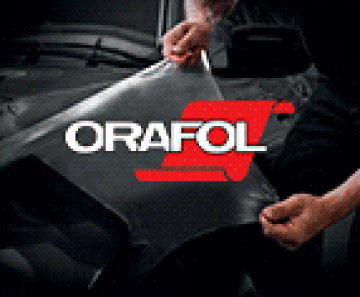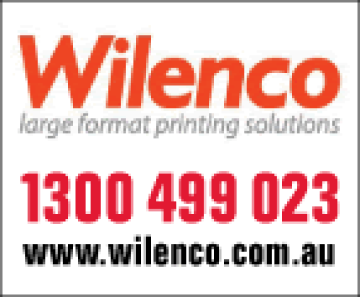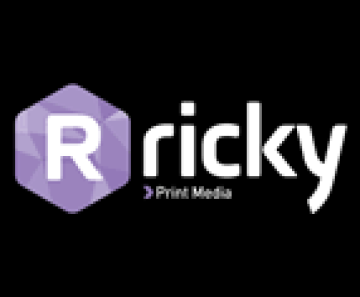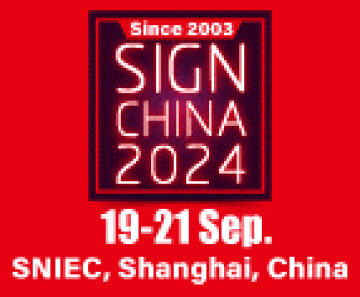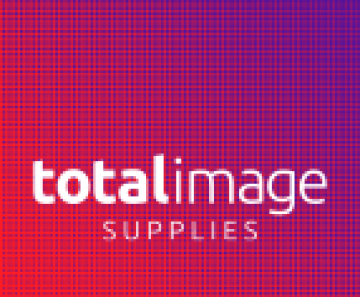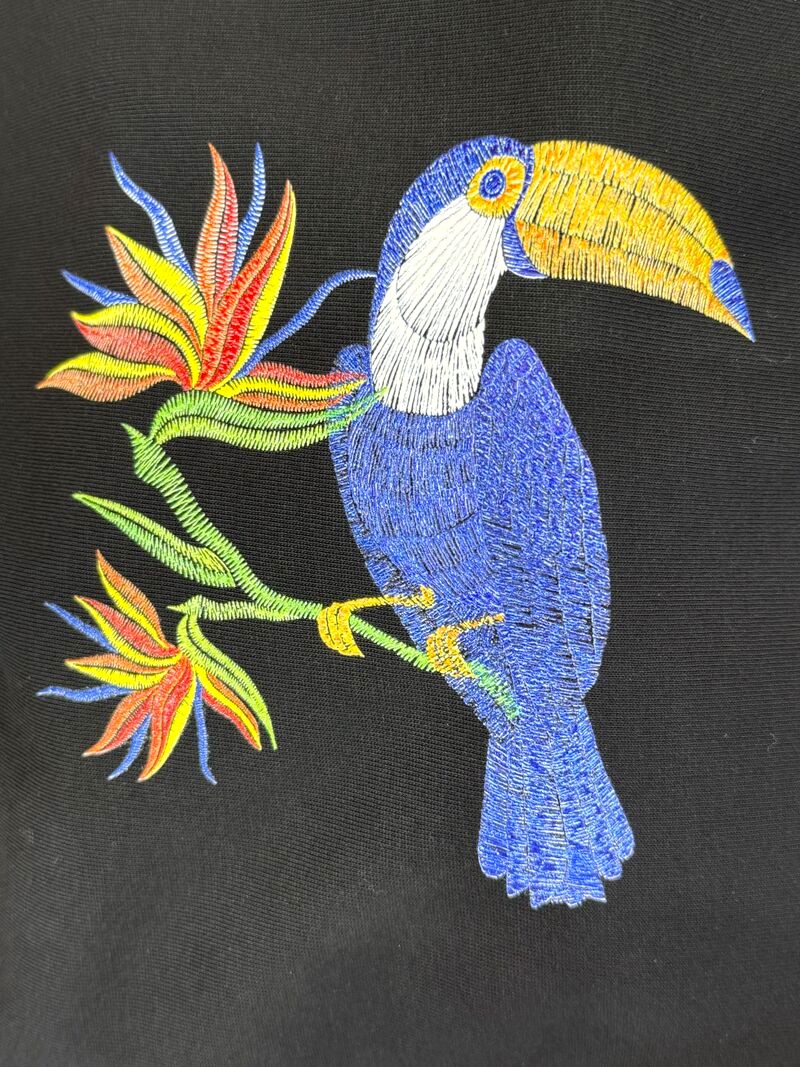 Is it real embroidery…?
Is it real embroidery…? 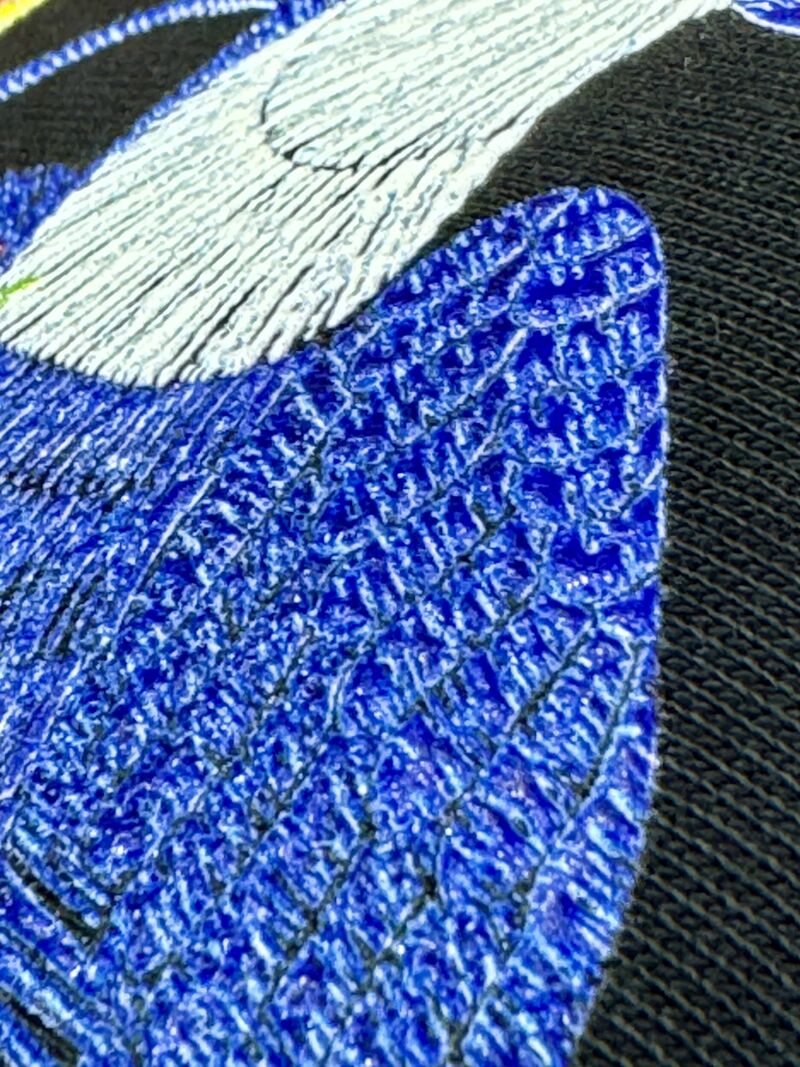 … or printed UV-DTF ?
… or printed UV-DTF ?
DS Printech China 2024 is organised by Messe Frankfurt, whose Heimtextil shows are renowned in the world of textile decorating. Billed as a Screen & Digital Printing event, it ran from November 11th-13th in Guangzhou.
On the ground was Keypoint Intelligence’s Johnny Shell, who spotted an exciting trend in DTF (Direct-to-Film) printing – Faux Embroidery. This is where raised embroidery-effect patterns are transfered onto textiles or hard surfaces. This is not to take any kudos away from hand and automated embroidery using cotton threads, an exquisite craft but labour and time-consuming. For example the 9 x 19 metre tapestry hanging in Australia’s Parliament Great Hall took 12 weavers four years to complete! Og course, it’s a work of art and a tapestry but the point is – for garment and footwear decoration with a ‘faux embroidered’ look, DTF is fast, can be upscaled to industrial level and delivers stunning effects that look and feel like real embroidery.
Keypoint Intelligence reports that UV Direct-to-Film (UV-DTF) technology for fabrics is already making waves by enabling realistic embroidery simulation and expanding into footwear applications.
Key benefits include:
– High Detail and Vibrant Colors: UV-DTF delivers crisp, high-resolution designs with remarkable color depth, making it ideal for intricate, embroidered-like textures.
– Durable and Flexible: Perfect for applications that require long-lasting wear, such as footwear, where UV-DTF’s durability really shines.
– Eco-Friendly Efficiency: UV curing technology reduces waste and energy usage, aligning with today’s sustainability goals.
– Cost Effective: At a cost of around USD $4/m2 the solution provides cost-effective benefits for high-end applications like footwear.
Current production details are a little sketchy and range from home-imaged faux emroidered garments using heat transfers to more elaborate industry-scale UV-DTF printers and heat press transfer techniques. Conventional powder + shaker/oven faux embroidered patterns are also possible.
It makes us recall ‘raised printing’ once so popular on business cards, where thermal powder was applied to still wet ink and run through a heater and – pop! your name and/or logo was raised up and glossy. There’s much more to emerge in the ‘faux embroidery’ sector and we’ll keep you up to date but it looks like a winner in the ever-expanding world of DTF.




